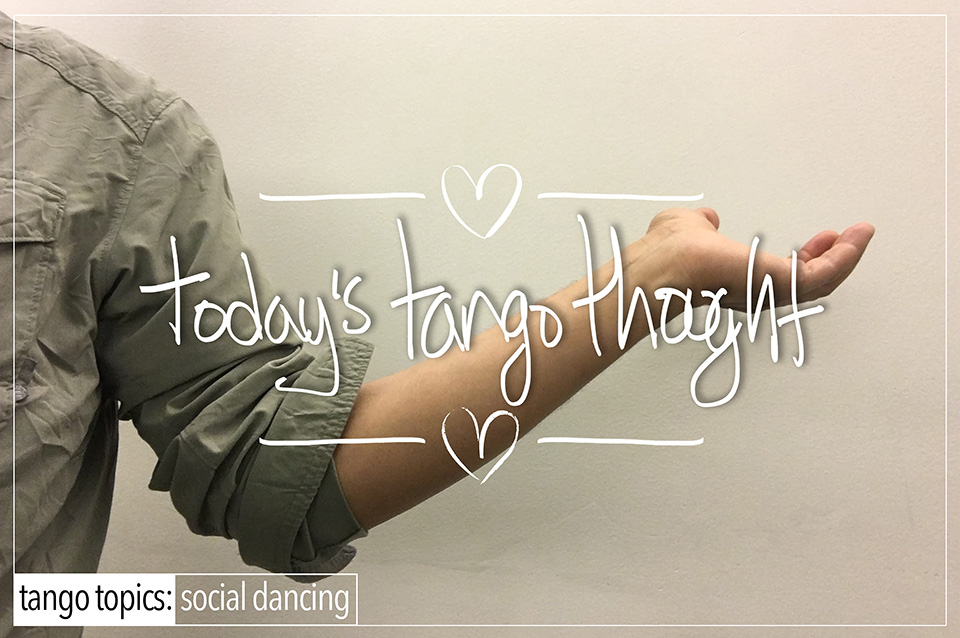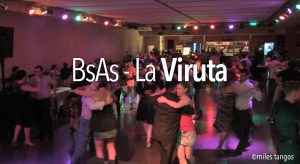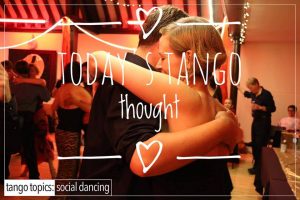Another one that you’re going to see a lot of is the Lead who places his palm upward, flat, and outwards, sometimes fingers outstretched as if they were a waiter serving drinks at an upscale bar. The elbow is dropped, and the hand is well below shoulder level.
Is this desirable form for a Lead ? It depends on your point of view really. There are some who view this as very comfortable for both roles. There are a greater number of people that view it as the execution of poor lead technique. Why ? For the simple reason that it violates the iconic look of Tango. There is some validity to this last statement as it does violate the ‘prow of the ship’ rule. That the Lead wants to generate (or at least look like) they’re generating a strong masculine presence with their embrace. ‘Look like’ being the operative words.
To be fair, the hand position itself is quite comfortable for the Follower, for a time. There’s no stress or strain on the wrist. And quite honestly, it’s easy. However, there is stress on the back of the Follower’s right shoulder, and the muscles that surround it. It’s an odd place to hold one’s arm and hand. Almost regal to a point. However, if the Follower is much smaller than the Lead in question (height wise) then there is even more stress on the Follower’s wrist, and it’s not all the comfortable.
Usually this hand position goes part and parcel with the forearm being outstretched.











